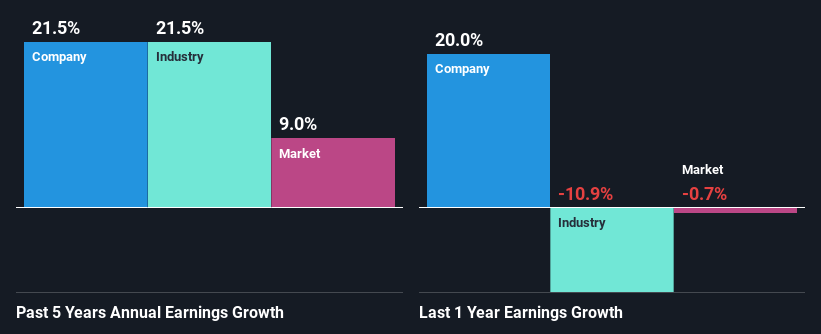Is Softcat plc's (LON:SCT) Stock's Recent Performance Being Led By Its Attractive Financial Prospects?
Most readers would already be aware that Softcat's (LON:SCT) stock increased significantly by 11% over the past three months. Since the market usually pay for a company’s long-term fundamentals, we decided to study the company’s key performance indicators to see if they could be influencing the market. In this article, we decided to focus on Softcat's ROE.
Return on Equity or ROE is a test of how effectively a company is growing its value and managing investors’ money. Put another way, it reveals the company's success at turning shareholder investments into profits.
See our latest analysis for Softcat
How To Calculate Return On Equity?
The formula for ROE is:
Return on Equity = Net Profit (from continuing operations) ÷ Shareholders' Equity
So, based on the above formula, the ROE for Softcat is:
63% = UK£89m ÷ UK£140m (Based on the trailing twelve months to January 2021).
The 'return' is the amount earned after tax over the last twelve months. That means that for every £1 worth of shareholders' equity, the company generated £0.63 in profit.
What Has ROE Got To Do With Earnings Growth?
Thus far, we have learned that ROE measures how efficiently a company is generating its profits. Depending on how much of these profits the company reinvests or "retains", and how effectively it does so, we are then able to assess a company’s earnings growth potential. Generally speaking, other things being equal, firms with a high return on equity and profit retention, have a higher growth rate than firms that don’t share these attributes.
Softcat's Earnings Growth And 63% ROE
First thing first, we like that Softcat has an impressive ROE. Additionally, the company's ROE is higher compared to the industry average of 9.8% which is quite remarkable. So, the substantial 21% net income growth seen by Softcat over the past five years isn't overly surprising.
As a next step, we compared Softcat's net income growth with the industry and found that the company has a similar growth figure when compared with the industry average growth rate of 21% in the same period.
The basis for attaching value to a company is, to a great extent, tied to its earnings growth. It’s important for an investor to know whether the market has priced in the company's expected earnings growth (or decline). By doing so, they will have an idea if the stock is headed into clear blue waters or if swampy waters await. Is Softcat fairly valued compared to other companies? These 3 valuation measures might help you decide.
Is Softcat Using Its Retained Earnings Effectively?
Softcat's three-year median payout ratio is a pretty moderate 43%, meaning the company retains 57% of its income. By the looks of it, the dividend is well covered and Softcat is reinvesting its profits efficiently as evidenced by its exceptional growth which we discussed above.
Additionally, Softcat has paid dividends over a period of five years which means that the company is pretty serious about sharing its profits with shareholders. Upon studying the latest analysts' consensus data, we found that the company's future payout ratio is expected to rise to 56% over the next three years. Accordingly, the expected increase in the payout ratio explains the expected decline in the company's ROE to 49%, over the same period.
Summary
Overall, we are quite pleased with Softcat's performance. Specifically, we like that the company is reinvesting a huge chunk of its profits at a high rate of return. This of course has caused the company to see substantial growth in its earnings. With that said, the latest industry analyst forecasts reveal that the company's earnings growth is expected to slow down. To know more about the company's future earnings growth forecasts take a look at this free report on analyst forecasts for the company to find out more.
This article by Simply Wall St is general in nature. It does not constitute a recommendation to buy or sell any stock, and does not take account of your objectives, or your financial situation. We aim to bring you long-term focused analysis driven by fundamental data. Note that our analysis may not factor in the latest price-sensitive company announcements or qualitative material. Simply Wall St has no position in any stocks mentioned.
Have feedback on this article? Concerned about the content? Get in touch with us directly. Alternatively, email editorial-team (at) simplywallst.com.

 Yahoo Finance
Yahoo Finance 
